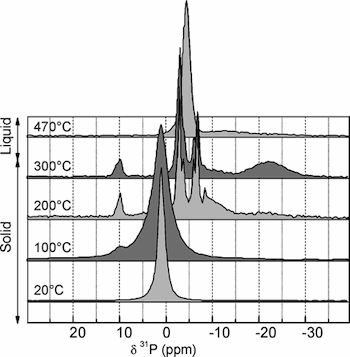Ask for a reprint
email :
* Give your email
2009
ACL
|
D.Hudry, A.Rakhmatullin, C.Bessada, I.Bardez, F.Bart, S.Jobic, P.Deniard, 'Reactivity of NH4H2PO4 toward LaCl3 in LiCl-KCl Melt Flux. Step by Step Formation of Monazite-Like LaPO4.', Inorg. Chem. 48 7141–7150 (2009) doi:10.1021/ic9003142
The synthesis of lanthanum phosphates in molten LiCl-KCL eutectic was chosen to address the preliminary treatment of chlorinated wastes containing fission products that are already present in a Li/Cl eutectic. The obtained monazite compound shows interesting properties to be considered as a good candidate to trap lanthanum for a long-time. The synthesis route based on LaCl3 reaction with NH4H2PO4 in a stoichiometric amount is a key point to obtain monazite as a pure phase. Hence, the salt composition is not modified during the synthesis reaction. The chemical reactivity of ammonium dihydrogenphosphate (NH4H2PO4, hereafter abbreviated ADP) toward lanthanum chloride (LaCl3) in molten LiCl-KCl eutectic is probed by NMR spectroscopy to follow the formation of LaPO4. Formally, a direct transformation of the two aforementioned precursors into LaPO4, NH4Cl and HCl can be discarded on the basis of the low thermal stability of ADP. To shed some light on the formation of LaPO4, in situ and ex situ NMR experiments were carried out on LiCl-KCl/LaCl3/ADP, as well as LiCl-KCl/ADP, KCl/ADP, and LiCl/ADP mixtures. First, the reactivity of the precursors in contact with the eutectic was studied from room temperature to 600 °C by means of 31P, 35Cl, and 139La high temperature NMR. Second, ex situ room temperature magic angle spinning (MAS) and RadioFrequency driven recoupling (RFDR) 31P solid-state NMR experiments were carried out on solid samples prepared in different conditions (i.e., temperature and atmosphere) and quenched at room temperature to identify frozen intermediate species in their metastable state. On the basis of this approach, we propose a model for the LaPO4 formation based on a multistep mechanism which highlights the strong reactivity of ADP toward the alkaline salts but without final change in the composition of the solvent.
|

|